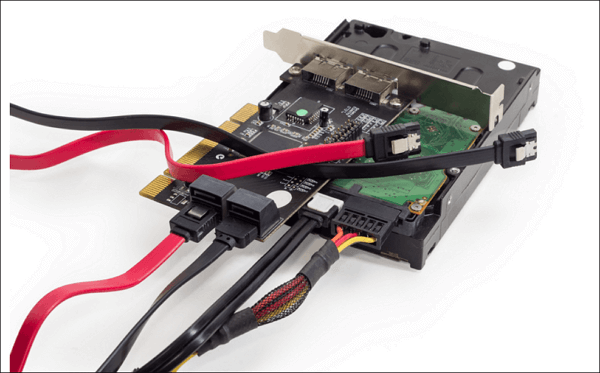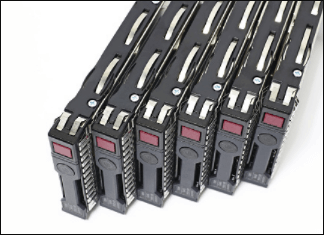Types of Hard Drives 2023 | Which One to Choose - Qiling
What Is a Hard Drive?

The hard drive is the main storage device that holds the operating system and other applications, and is crucial to computer operation, as it loads important files and applications into RAM when the system is booted up or an application is clicked.
There are four main types of hard drives, each with varying capacities, and understanding these differences is crucial when buying a new drive or backing up data to another hard drive. These include various types of hard drives with different capacities. Knowing the types of hard drives will help you make the right decision when buying a new drive or backing up your data. There are different types of hard drives with different capacities.
What Are the Main Types of Hard Drives?
People use various types of hard drives to backup and restore, which can be broadly categorized into four main types. Each type has its own pros and cons, and understanding these differences is essential for making informed decisions about data storage and management.
1. Parallel ATA (PATA)

The PATA hard drive was first introduced by Compaq and Western Digital in 1986, featuring a transfer speed of up to 133 MB/S and a maximum capacity of 80GB. It used a drive interface to connect devices and hard drives to the computer, relying on 40 or 80 wire ribbon cables and 16-bit parallel data transfer. Although it had a significant impact on modern society, its features are now outdated and it is gradually being phased out.
Pros
- The cable is designed to allow two devices to be connected to it simultaneously, enabling simultaneous data transfer and communication between the two devices.
Cons
- Big and difficult to manage
2. Serial ATA (SATA)
Serial ATA (SATA) hard drives are the most common type of hard drive, widely supported by computer motherboards and operating systems.

SATA hard drives are relatively inexpensive and often have a large storage capacity, measured in terabytes. They come in two main sizes: the 3.5-inch version, typically used in desktop computers, and the 2.5-inch smaller version, commonly used in laptop computers.
Pros
- High capacity
- Low price
Cons
- Limited data transfer speeds
- Mechanical parts have wear and tear
3. Small Computer System Interface (SCSI)
In the 1970s, Shugart Associates developed the Shugart Associates System Interface (SASI), which was later renamed to Small Computer System Interface (SCSI).

This hard drive connects hard drives and other devices to a computer with a 50-pin flat ribbon connector. It allows the connection and transmission of data between the computer and other devices such as scanners, CD drives, and printers. Do you know its cons and what makes small computer system interfaces so popular? It is listed below.
Pros
- An independent controller
- Widely applied
- Highly accessible
Cons
- Costly
- Difficult to configure
- Degrading with time
4. Solid State Hard Drive - SSD & NVMe
The solid-A hard drive is an advanced storage device made up of memory chips, unlike conventional hard disks which use rotating magnetic disks.

The SSD (Solid-State Drive) is a safe and reliable storage option, unlike traditional hard disk drives with rotating disks and fragile parts. It stores data in a semiconductor chip using flash memory, making it a popular choice for many users. However, despite its benefits, SSDs also have some drawbacks.
Pros
- Rather fast
- Safe and durable without moving parts
Cons
- Costly
- Low capacity
- Which hard drive is that?
- NVMe
NVMe is a high-speed SSD version that uses solid-state semiconductors to store data, offering the fastest interface between a CPU and external device, excluding RAM. With transfer speeds of up to 32Gb/s or 64Gb/s, NVMe is extremely fast, but also comes with a hefty price tag.

The high-end graphics card has become a popular choice for gaming, video editing, and other resource-intensive tasks, despite its high price, showcasing its clear pros and cons.
Pros
- The fastest reading and writing speed
Cons
- Costly
When choosing a suitable hard drive, consider the features that matter to you. For example, if you need to store large files or run resource-intensive programs, a high-capacity hard drive with a large storage capacity (e.g.
How to Choose a Suitable Hard Drive?
When selecting a hard drive, are you disturbed by various slogans and advertisements? If so, you can follow these suggestions.
1. Choose the proper interface.
2. Choose a reasonable capacity.
3. Choose an affordable price.
4. Figure out the consumption and noise level.
5. Life expectancy is also important.
Also, you may still be confused about HDD and SSD. So let's have a further comparison between HDD and SSD.
HDD VS SSD, What Types of Hard Drives Are Better for Your Needs?
Solid-state and hard disk drives have similar physical specifications, but they store data differently. Different types of hard drives have different advantages and disadvantages. Deciding to buy which type depends on your specific needs. Here is a table to respectively show you what their specific features are.
| Features | HDD | SSD |
|---|---|---|
| Speed | HDDs (Hard Disk Drives) are generally slower compared to SSDs (Solid State Drives). They take longer to read and write data and can only handle fewer input and output operations per second, making them less efficient for tasks that require quick access to data. | SSDs are faster than HDDs because they can read and write more data in the same time period. |
| Heat and noise | It will generate heat and noise during the process. | It does not generate heat and noise while reading and writing. |
| Electricity consumption | Hard Disk Drives (HDDs) consume more power compared to Solid State Drives (SSDs) because they require mechanical components, such as the spinning platter, to function, which increases their energy consumption. | SSD consumes less electricity. |
| Cost | Usually low. | Usually high, but its price is declining. |
| Weight | Heavier | Lighters are lighter because they do not have the rotating disks, spindle, and motor. |
| Dealing with vibration | It is fragile. HDD easily crashes due to vibration. | It is shock-resistant. SSD can bear vibration up to 2000Hz. |
| Reliability | The moving parts inside the HDD make data loss easier. | More reliable since it does not have moving parts inside. |
| Lifespan | Shorter | Longer |
| Ideal for |
Storing extra data, movies, photos, and other infrequently-used documents |
Storing the operating system, gaming apps, and other frequently-used files. |
Choosing the right hard drive depends on your needs. For laptops, a solid-state drive (SSD) is a good choice due to its non-mechanical and shock-resistant design. If you only need to store extra data, movies, or music, a hard disk drive (HDD) may suffice. However, for gaming or storing your operating system, an SSD is a better option.
Conclusion
This page provides an overview of various types of hard drives, highlighting their key features and differences, allowing you to learn more about hard drives and make an informed decision for your needs.
Related Articles
- How to Check Update to Windows 11 and Set Up Your PC to be Windows 11 Compatible
- What Is Spindump Mac and How to Utilize It? [Complete Guide]
- What Is NVMe: One of the Fastest SSD Data Storage [2022 All You Need to Know]
- Laptop vs. Desktop: Which Is Better for You? [Comparative Analysis]